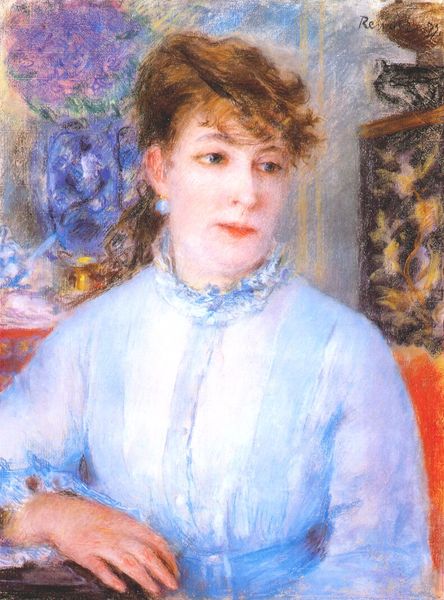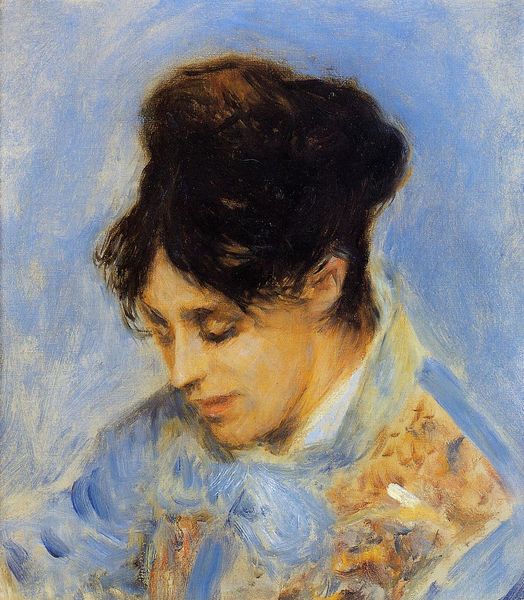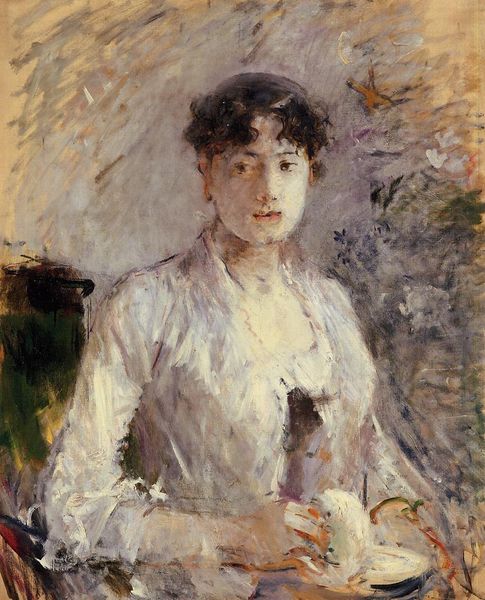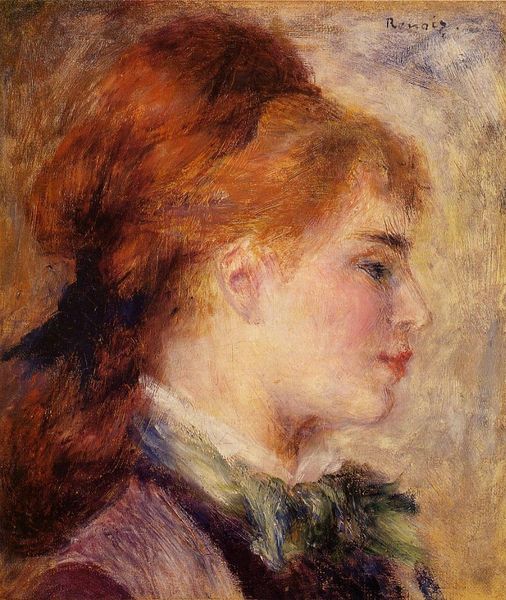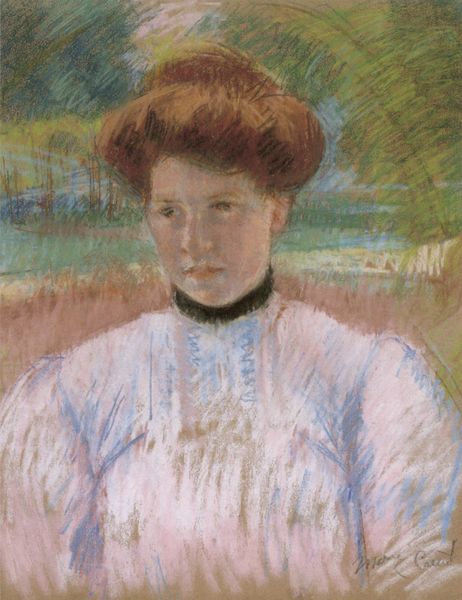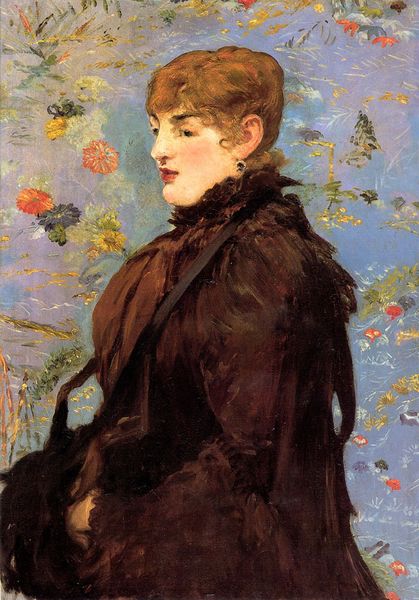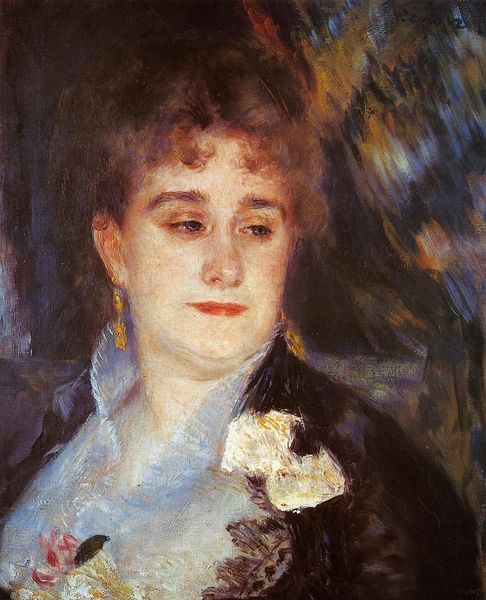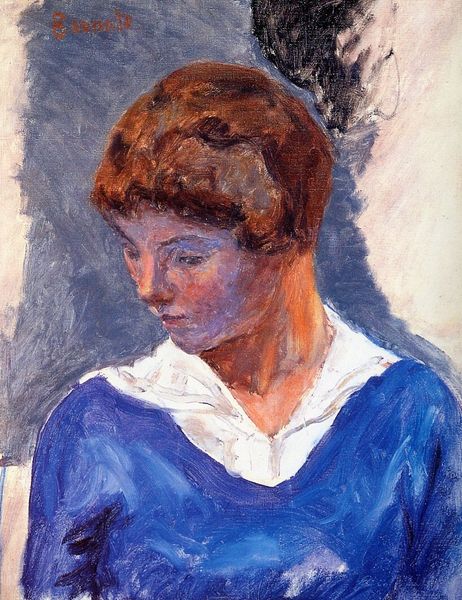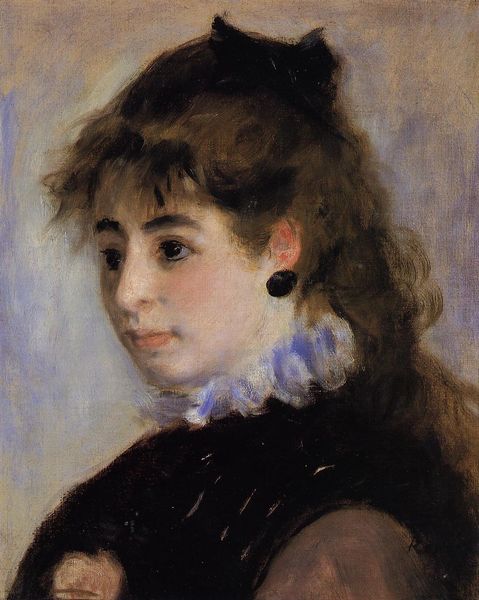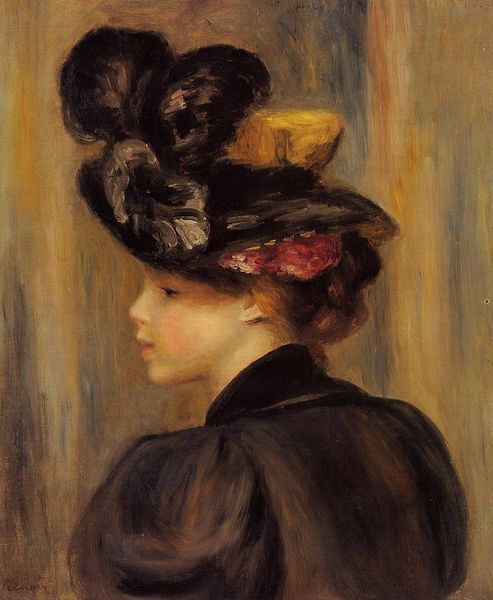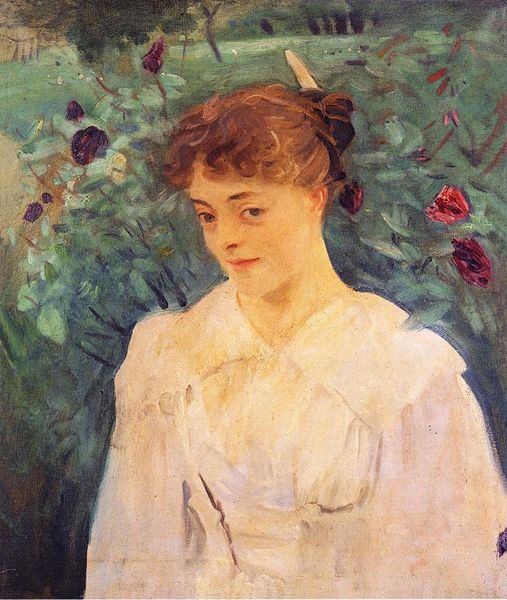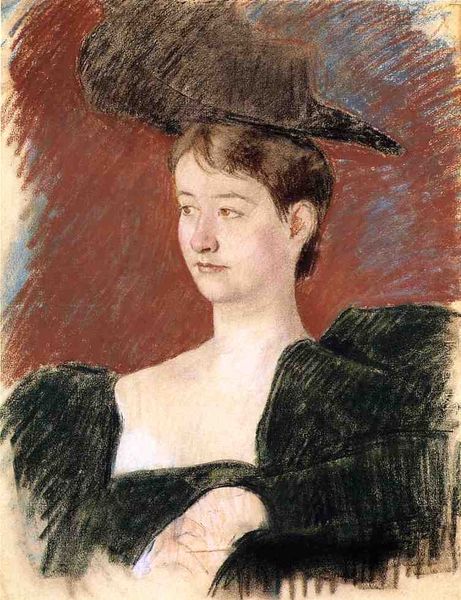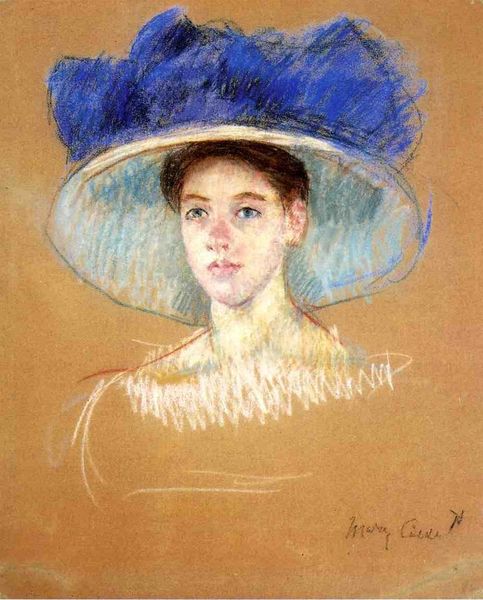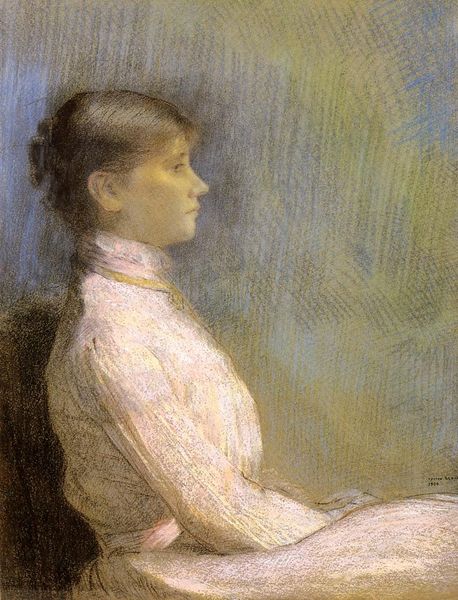
Copyright: Public domain
Carl Larsson made this pastel portrait of Alma in 1885, and what you see is essentially powdered pigment, lightly adhered to paper. Pastels occupy a fascinating place between drawing and painting. They're immediate, like a sketch, but also capable of rich color and texture. Notice how Larsson uses short, hatched strokes to build up Alma's features and clothing. The powdery quality of pastel allows for subtle gradations of tone, giving her skin a soft, almost luminous quality. But pastels are also inherently fragile. Unlike oil paint, which binds pigment in a stable film, pastels remain vulnerable to smudging and loss. This inherent impermanence might be seen as a metaphor for the fleeting nature of beauty, or the fragility of human life. Larsson was not interested in making art that was precious or durable. He embraced the immediacy and accessibility of pastel. He would often use the medium for quick portraits like this one, capturing a fleeting moment in time with remarkable sensitivity. This challenges the traditional hierarchy of art, inviting us to appreciate the beauty and skill inherent in even the most ephemeral of mediums.
Comments
No comments
Be the first to comment and join the conversation on the ultimate creative platform.
